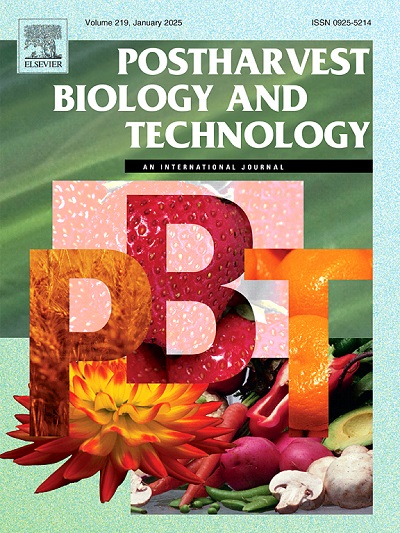When should postharvest avocado fruit rots be inspected via X-rays? Relationship between internal fruit rot development and skin color alteration in “Hass” avocados
IF 6.4
1区 农林科学
Q1 AGRONOMY
引用次数: 0
Abstract
Internal fruit rot during postharvest ripening poses a significant challenge to maintaining avocado quality. In the present study, we focused on the changes in the skin color of ‘Hass’ avocados during ripening as an indicator of the timing of avocado rotting. The timing of inspection by X-ray imaging is crucial for detecting internal fruit rot, because the causal fungi remain quiescent in unripe fruit. In other words, if avocados are inspected too early using X-ray imaging, potentially rotten fruit may be mistakenly labeled as healthy. In this study, the development of fruit internal rots in 422 ‘Hass’ avocados during five days of ripening was non-destructively observed using X-ray images in three experiments. The relationship between fruit rot severity; changes in skin color metrics, i.e., the values of lightness (L*), chroma (C*), hue angle (h°) from the CIE L*a*b* color system, were analyzed. Internal fruit rot was observed when skin color fell within a specific range despite initial skin color variations within and across experiments. Furthermore, X-ray images showed that 91 %, 70 %, 48 %, and 10 % of potentially rotten fruit on day 4 did not show internal rot symptoms on days 0, 1, 2, and 3 in the storage period, respectively. These results imply that testing fruit before the skin color reaches specific levels would lead to a significant increase in false negatives. Finally, we provided a color bar illustrating the skin color stages after which postharvest inspection should be performed to visually highlight the appropriate inspection timing. This study underscores the importance of the inspection timing of avocados and demonstrates the potential of skin color metrics as objective criteria for determining the timing of inspection.
求助全文
约1分钟内获得全文
求助全文
来源期刊

Postharvest Biology and Technology
农林科学-农艺学
CiteScore
12.00
自引率
11.40%
发文量
309
审稿时长
38 days
期刊介绍:
The journal is devoted exclusively to the publication of original papers, review articles and frontiers articles on biological and technological postharvest research. This includes the areas of postharvest storage, treatments and underpinning mechanisms, quality evaluation, packaging, handling and distribution of fresh horticultural crops including fruit, vegetables, flowers and nuts, but excluding grains, seeds and forages.
Papers reporting novel insights from fundamental and interdisciplinary research will be particularly encouraged. These disciplines include systems biology, bioinformatics, entomology, plant physiology, plant pathology, (bio)chemistry, engineering, modelling, and technologies for nondestructive testing.
Manuscripts on fresh food crops that will be further processed after postharvest storage, or on food processes beyond refrigeration, packaging and minimal processing will not be considered.
 求助内容:
求助内容: 应助结果提醒方式:
应助结果提醒方式:


